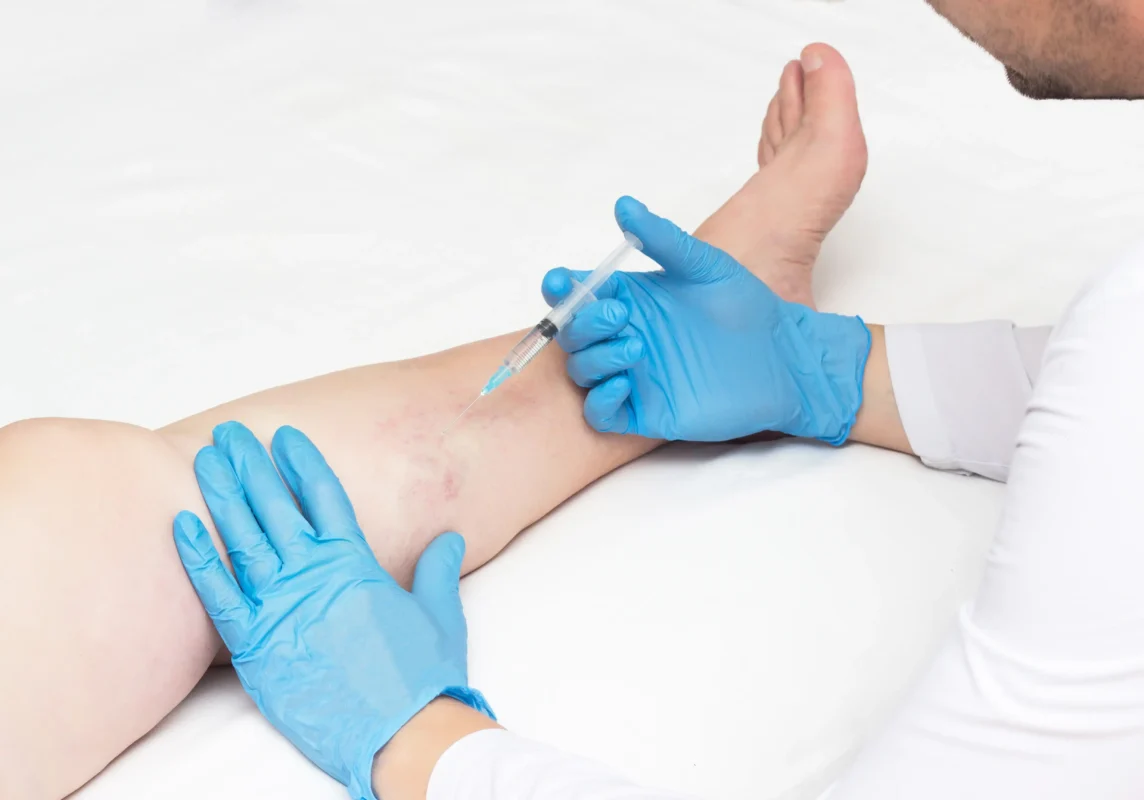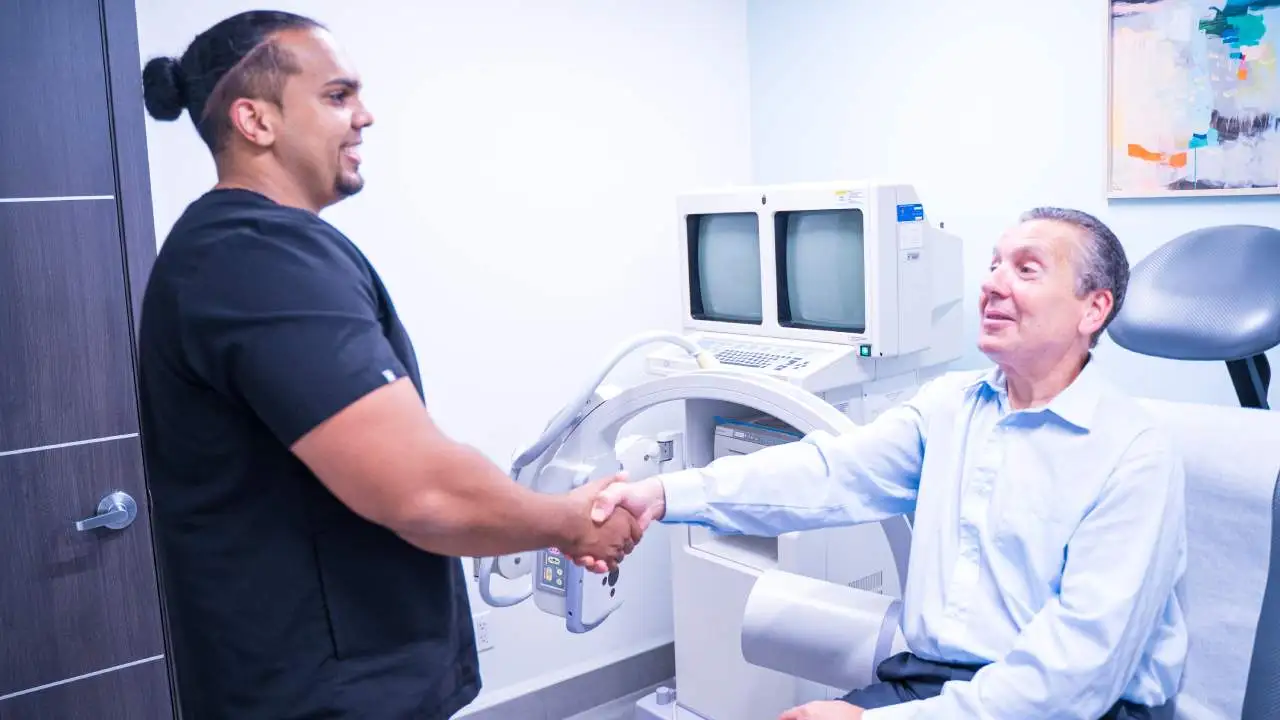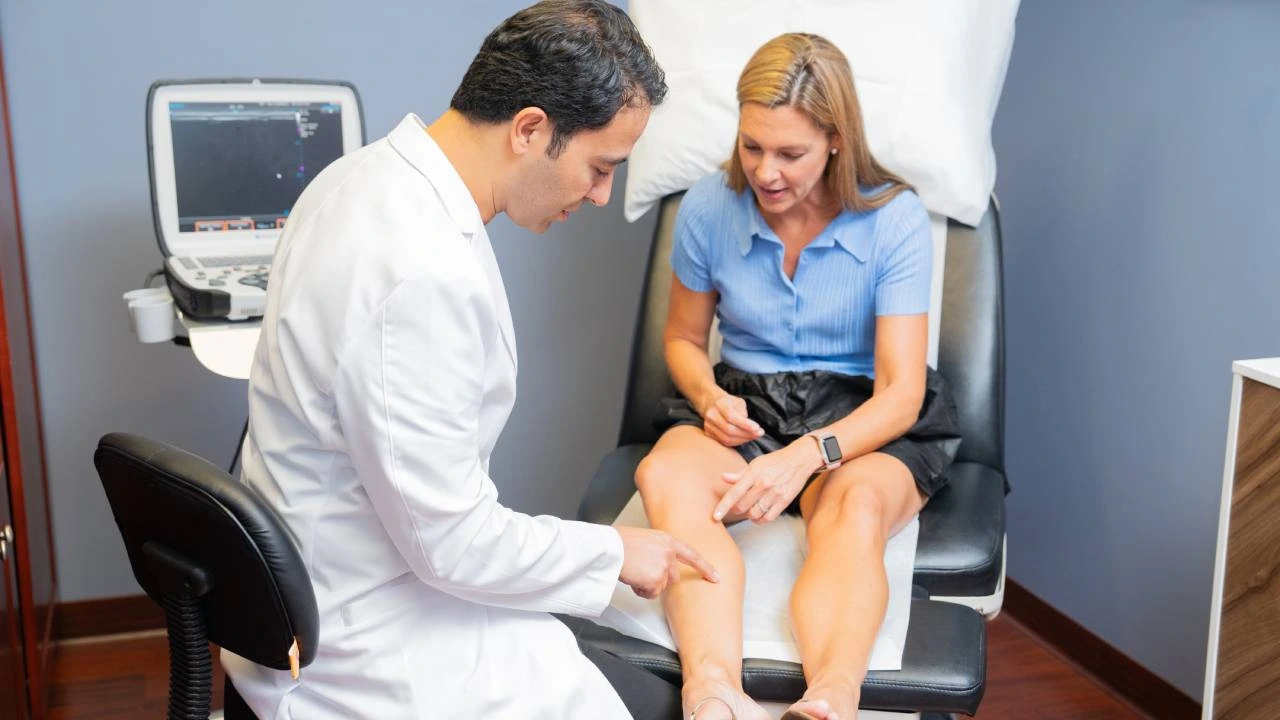Varicose veins are a common medical condition that affects millions of people worldwide. These enlarged, twisted veins, often visible just beneath the surface of the skin, are more than a cosmetic concern—they can be a sign of underlying venous insufficiency. One question that arises frequently is whether varicose veins are related to bruising. Schedule an appointment with a vein doctor, or keep reading to explore the connection between varicose veins and bruising, and gain insights into the causes, symptoms, and vein treatment options.
What are Varicose Veins?
Varicose veins develop when weakened or damaged valves in the veins allow blood to flow backward and pool, increasing pressure. This causes the veins to expand, becoming swollen, twisted, and visible beneath the skin, often with symptoms like pain or heaviness. Most commonly found in the legs, varicose veins are caused by the extra strain of standing and walking, which can worsen the condition over time.
Symptoms of varicose veins include:
- Visible, bulging veins
- Swelling in the legs and ankles
- Aching or heaviness in the legs
- Itching or irritation around the veins
How do Varicose Veins affect the skin?
While these symptoms are well-known, many individuals with varicose veins also notice some skin findings as well, such as stasis dermatitis and bruising.
Stasis dermatitis is a skin condition caused by poor circulation in the legs, leading to discoloration and inflammation, typically appearing as red, brown, or scaly patches on the lower legs. On the other hand, a bruise is a localized area of discoloration on the skin caused by a direct injury that breaks blood vessels, often appearing as a purple or blue mark and usually related to trauma. It can also change color over time from red to purple to yellow as it heals.
The key difference is that stasis dermatitis is a chronic condition related to poor blood flow, while a bruise is a result of a specific injury. Therefore, stasis dermatitis can worsen over time if left untreated, while a bruise will gradually fade as the body reabsorbs the blood. However, both can be associated with varicose veins.
The Connection Between Varicose Veins and Bruising
Bruising occurs when small blood vessels, known as capillaries, are damaged and blood leaks into the surrounding tissues. This damage is often caused by trauma. However, for individuals with varicose veins, even minor bumps or pressure can result in significant bruising.
There are a few reasons why people with vein disease could see bruising that is far worse than the injury they might experience. Varicose veins are prone to bruising due to weakened vein walls, increased pressure from poor blood flow, and their superficial location just beneath the skin, which makes them more vulnerable to external forces. Additionally, chronic venous insufficiency can cause skin thinning and discoloration, further increasing sensitivity and susceptibility to bruising.
When Should You Be Concerned About Bruising?
While occasional bruising is normal, frequent or unexplained bruising warrants attention. Bruising related to varicose veins may signal worsening venous insufficiency or other underlying health conditions. Signs to watch for include:
- Large or painful bruises without a clear cause
- Persistent swelling in the affected area
- Changes in skin color or texture around the veins
- Open sores or ulcers near the varicose veins
If you are experiencing any symptoms related to varicose veins, such as pain, swelling, heaviness, or visible bulging veins, it’s essential to seek the advice of a vein doctor. Early consultation with a vein specialist is important to address any underlying issues, prevent the condition from worsening, and explore effective treatment options tailored to your specific needs.
Treatment Options for Varicose Veins and Bruising
A vein doctor specializes in diagnosing and treating vein-related issues. During a visit, they review your medical history, assess symptoms, perform a physical exam, and may use diagnostic imaging like Doppler ultrasound to evaluate blood flow and vein structure. Based on these findings, they develop a personalized treatment plan to improve vein health.
Several effective vein treatments exist for improving vein health, addressing issues like varicose and spider veins, and reducing associated symptoms, including bruising. A vein clinic can offer several minimally invasive procedures tailored to your specific needs. Sclerotherapy involves injecting a solution into affected veins, causing them to collapse and fade, making it particularly effective for spider veins and small varicose veins while reducing symptoms like bruising. Laser therapy, a non-invasive option, uses laser energy to close off smaller veins near the skin’s surface with precision. For larger varicose veins, endovenous ablation therapy employs heat, delivered via catheter, to seal problematic veins and enhance blood flow.
Preventing Bruising and Promoting Vein Health
Genetics and age are unavoidable risk factors for varicose veins, but several strategies can promote vein health and reduce symptoms like swelling and bruising. Regular exercise improves circulation, leg elevation reduces blood pooling, and maintaining a healthy weight minimizes vein pressure. Compression therapy, using specialized stockings, enhances blood flow, alleviates discomfort, and prevents further vein damage. Avoiding prolonged sitting or standing also supports better circulation. Together, these lifestyle modifications and treatments provide effective solutions for improving vein health.
Bruising can indeed be related to varicose veins, often due to weakened vein walls, poor blood flow, and increased fragility. While this connection may cause concern, understanding the underlying issues and seeking appropriate vein treatment can significantly improve your symptoms and overall quality of life.
If you’re struggling with varicose veins, spider veins, or unexplained bruising, it’s important not to delay seeking professional care. These issues can indicate underlying venous insufficiency, which may worsen over time without proper vein treatment. By visiting a reputable vein clinic, you can gain a better understanding of your condition and explore tailored solutions designed to address your specific needs.
A vein doctor will evaluate your symptoms, provide expert guidance, and recommend effective treatments to improve both your vein health and overall well-being. Don’t wait—reach out to a vein clinic today and take the first step toward healthier, stronger, and more resilient veins.










